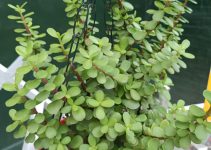Lavender
Lavandula_ spp.
Lavender fills the early-summer garden with sensory delights: beautiful purple-tone blooms atop foliage that oozes fragrance on a sunny afternoon. Every part of the plant is infused with aromatic oil, making this a choice herb to place along pathways or near outdoor seating areas so you can savor the fragrance. Lavender varieties abound: The darker the flower, the more intense the aroma — and the flavor in cooking.
Drought-, heat-, and wind-tolerant, lavender doesn’t like poor drainage, waterlogged soil, or high humidity. Raised beds can enhance drainage; surrounding plants with a gravel mulch can help increase heat around roots. After flowering, shear plants to induce bushiness and subsequent bloom. Avoid cutting plants back to the ground. Dried blooms retain fragrance for a long time; crush dried flowers to release aromatic oils anew.
Light: Sun
Type: Herb, Perennial, Shrub
Height: 1 to 3 feet
Width: 1-3 feet wide
Flower color: Blue
Foliage color: Gray/Silver
Seasonal features: Summer bloom
Problem solvers: Deer resistant, Drought tolerant, Groundcover, Slope/Erosion Control
Special features: Attracts birds, Cut flowers, Fragrance, Good for containers
Zones: 5-10
How to Grow Lavender in the Garden
As lavender seeds are slow to germinate, purchasing seedling plants is the most reliable way to grow this plant. Growing lavender plants is an easy endeavor provided you give them what they need. Although lavender can tolerate a variety of growing conditions, this plant thrives best under warm, sunny conditions in well-drained soil. In addition, an alkaline soil rich in organic matter can encourage higher plant oil production, enhancing the fragrance in lavender plants.
As lavender is native to arid regions, the plant will not tolerate moist or overly wet conditions; therefore, it’s important to consider location when growing lavender plants. They should be located in areas with adequate drainage and spaced far enough apart to ensure good air circulation. This will help reduce the chance of developing root rot.
Plant Care
Once established, lavender plants require little care or maintenance. While they should be watered regularly early on, established plants need little water, as they are extremely drought tolerant.
Regular pruning not only keeps lavender plants neat looking in appearance, but also helps to encourage new growth. Low-growing varieties can be cut back to the new growth while larger types can be pruned to about a third of their overall height.
Generally, lavender plants take up to a year or more before they are ready for harvesting. However, once they are ready, it’s best to harvest the plants early in the day, picking flower spikes that haven’t fully opened yet. Bundle the plants up and hang upside down in a dry, dark area for about one to two weeks.
How to Grow Lavender Indoors
Growing lavender plants indoors is no different from out in the garden. However, when growing lavender inside, make sure that the plants receive plenty of light and warm temperatures. Water only when the plants are significantly dry and do not fertilize.
We hope that after reading these growing tips, lavender will make it into your garden. Once you know how to grow lavender, you can enjoy these fragrant plants for years to come.

